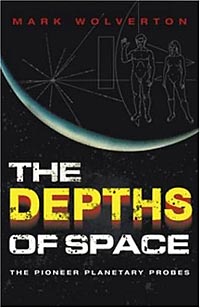Review: The Depths of Spaceby Jeff Foust
|
| Tom Gehrels, a planetary scientist involved with Pioneers 10 and 11, considered those missions such an “ultimate experience” he decided there was no need to participate in another spacecraft mission. |
The central figure of The Depths of Space is Charles Hall, the late program manager of the Pioneer program at NASA Ames. Decades before former NASA administrator Dan Goldin brought the philosophy of “faster, better, cheaper” to the space agency in general, Hall was exercising a similar management method for the Pioneer missions. An aeronautical engineer with little management experience before being picked to lead the Pioneer program at Ames, Hall quickly developed a no-nonsense management style. When the young project was in need of office space, he effectively commandeered the center’s cafeteria. Hall became famous within the Pioneer program for his daily “stand up” meetings, where all the participants were required to remain standing for the duration of the meeting: a technique designed to make the meetings as short as possible. Without his leadership, many people involved in the project claimed, Pioneer would not have been nearly as successful.
The Depths of Space does an excellent job describing the history of the Pioneer program in a manner that is accessible to the casual reader. However, given its modest length—only about 225 pages, excluding notes and index—the book is bound to leave some readers’ questions unanswered. While Hall is the central person of the book, his transformation from mild-mannered engineer to super program manager is very rapid: the text offers few insights regarding how Hall quickly became such an effective manager. Another topic the book barely covers is why the Pioneers got overshadowed, in the long run, by other missions, particularly those by rival center JPL. If the purpose of the Pioneer project was to give Ames a bigger role in NASA outside of aviation, in some respects it failed in the long-term: since the Pioneers, Ames has led the development of only a handful of spacecraft, such as Galileo’s atmospheric probe and the Lunar Prospector mission.
Towards the end of the book, Wolverton attempts to use Pioneer, as well as other robotic missions, to demonstrate that space exploration can be better accomplished with robots rather than by humans. This is a oft-repeated argument, made again just recently by a Pioneer project veteran, James Van Allen. (See “Human spaceflight is inevitable”, The Space Review, August 2, 2004.) This is a conclusion that others involved in Pioneer don’t necessarily accept. As Pioneer principal investigator Robert Soberman put it, “Man has a much greater acceptance ratio for the unforeseen. As much as it costs, there’s probably justification to have people out there.” While it may be many decades—even centuries—before humans venture to the outer solar system or the surface of Venus, they will be following a trail blazed by a series of spacecraft appropriately named Pioneer.
